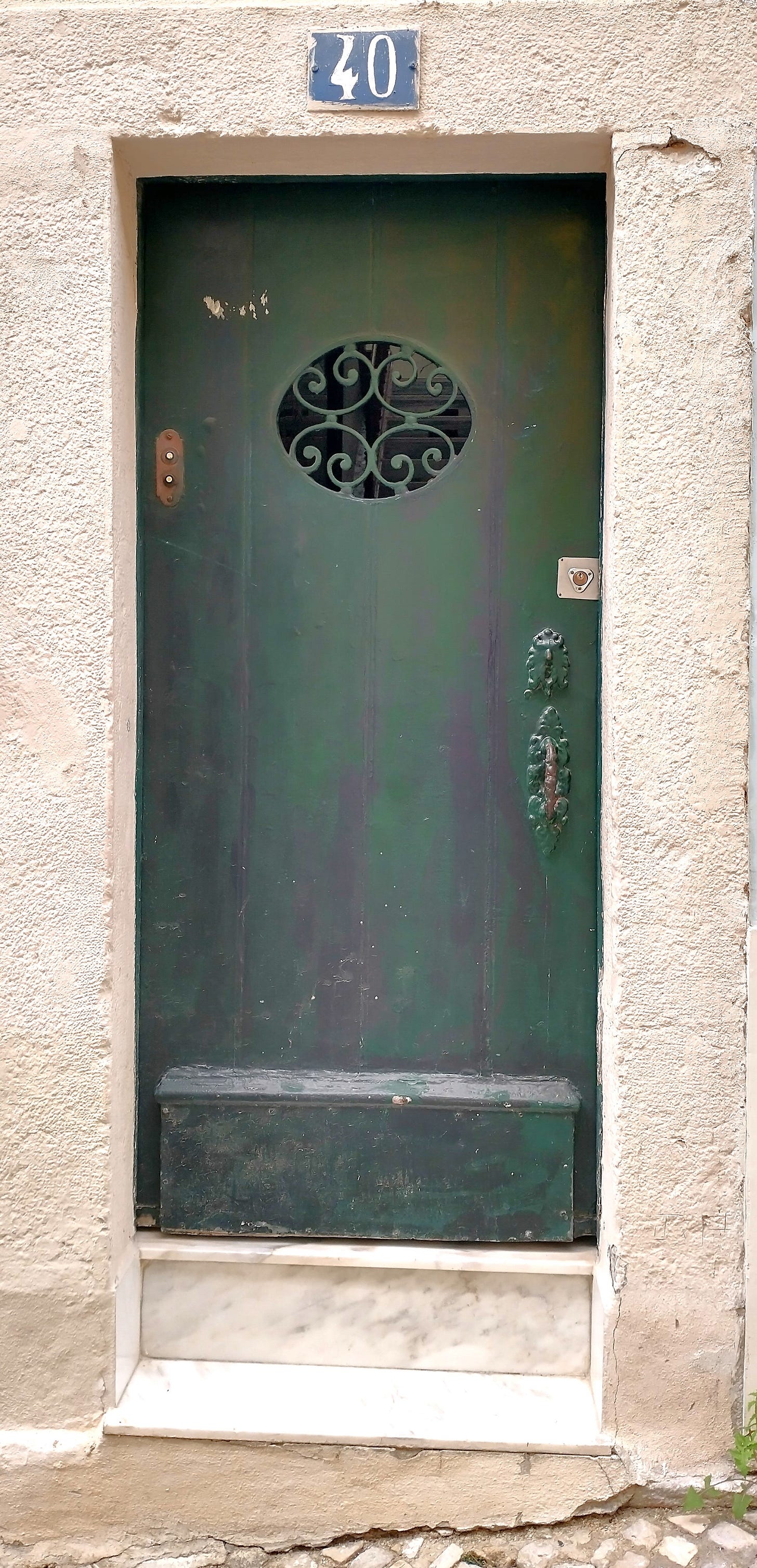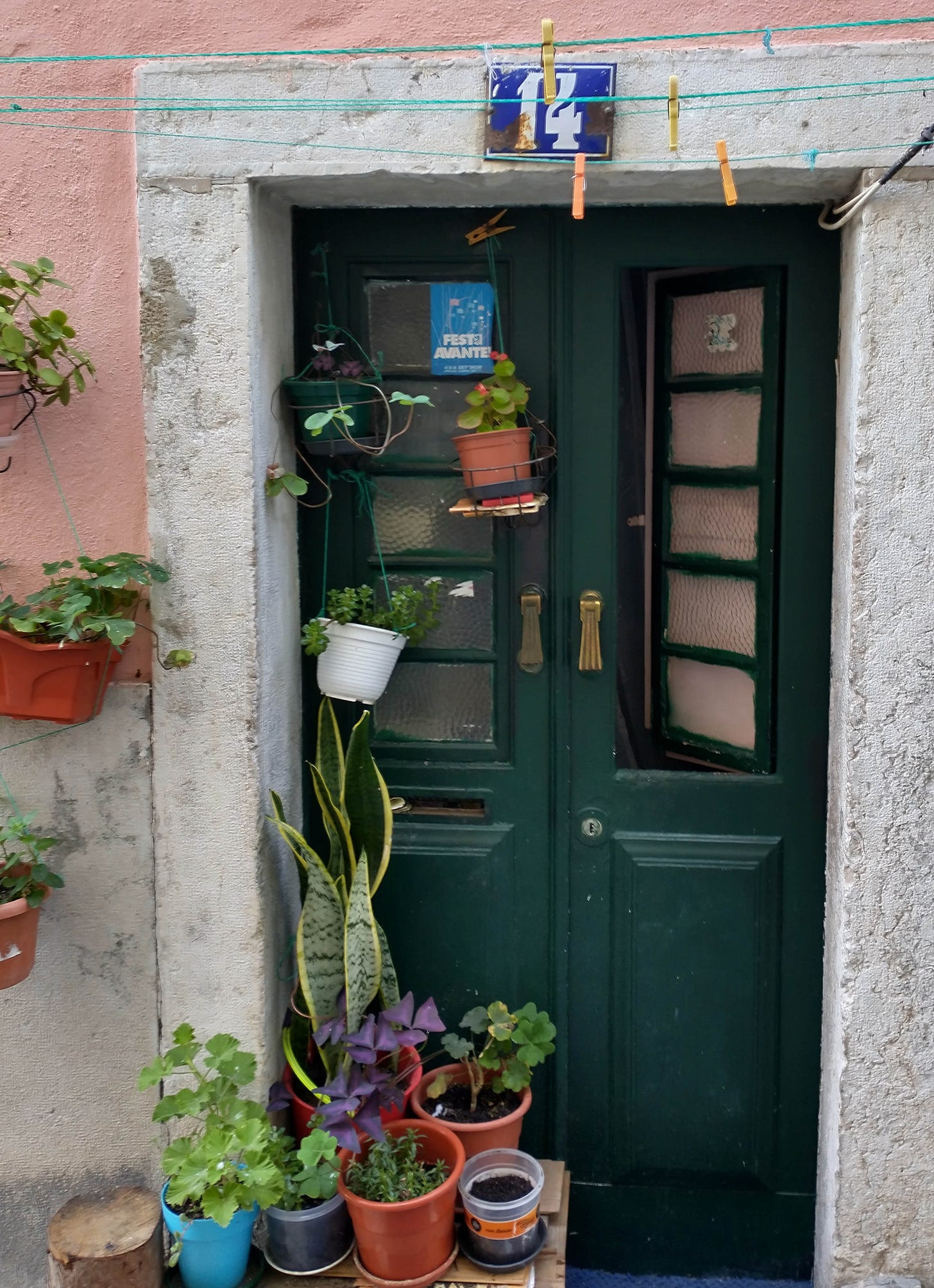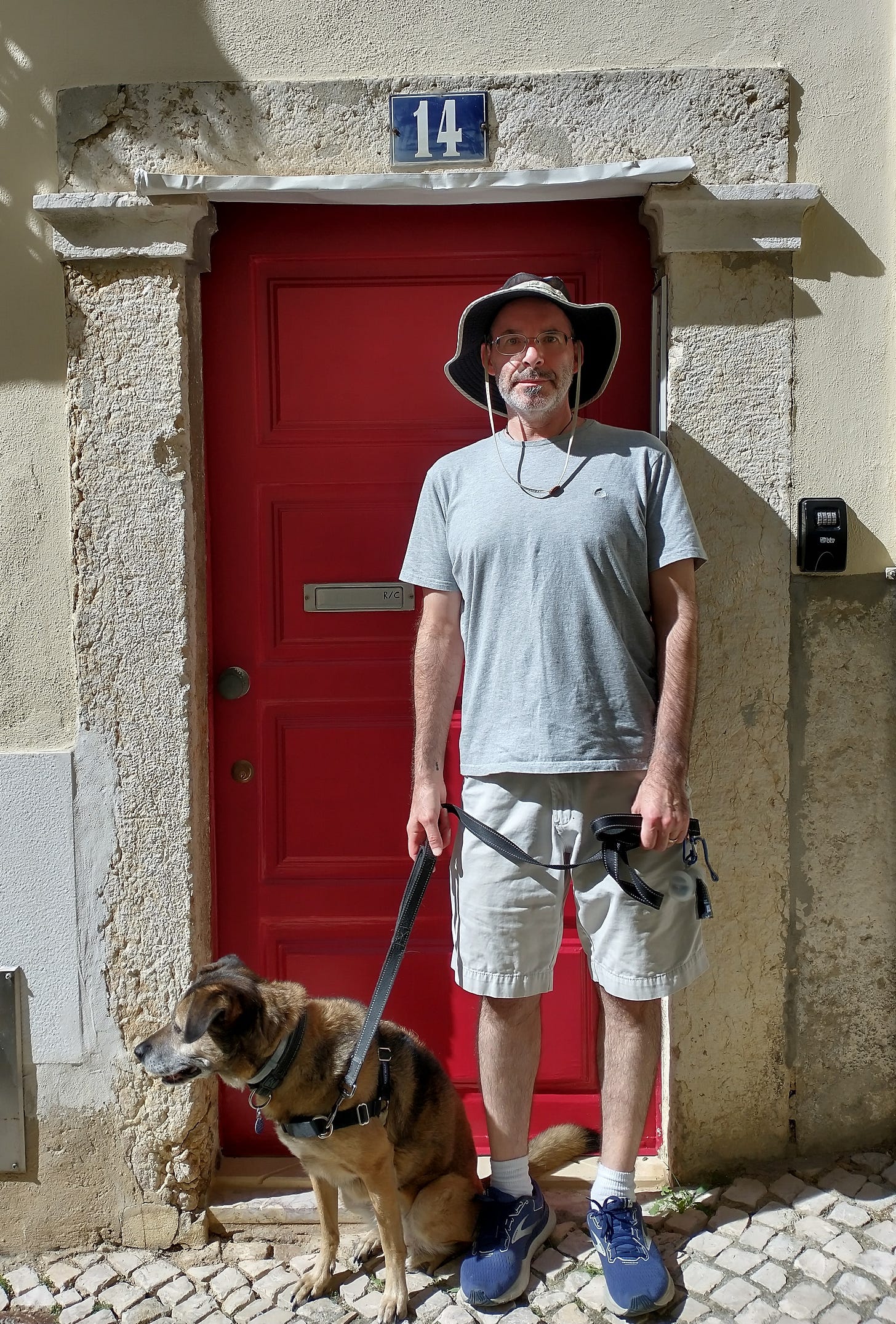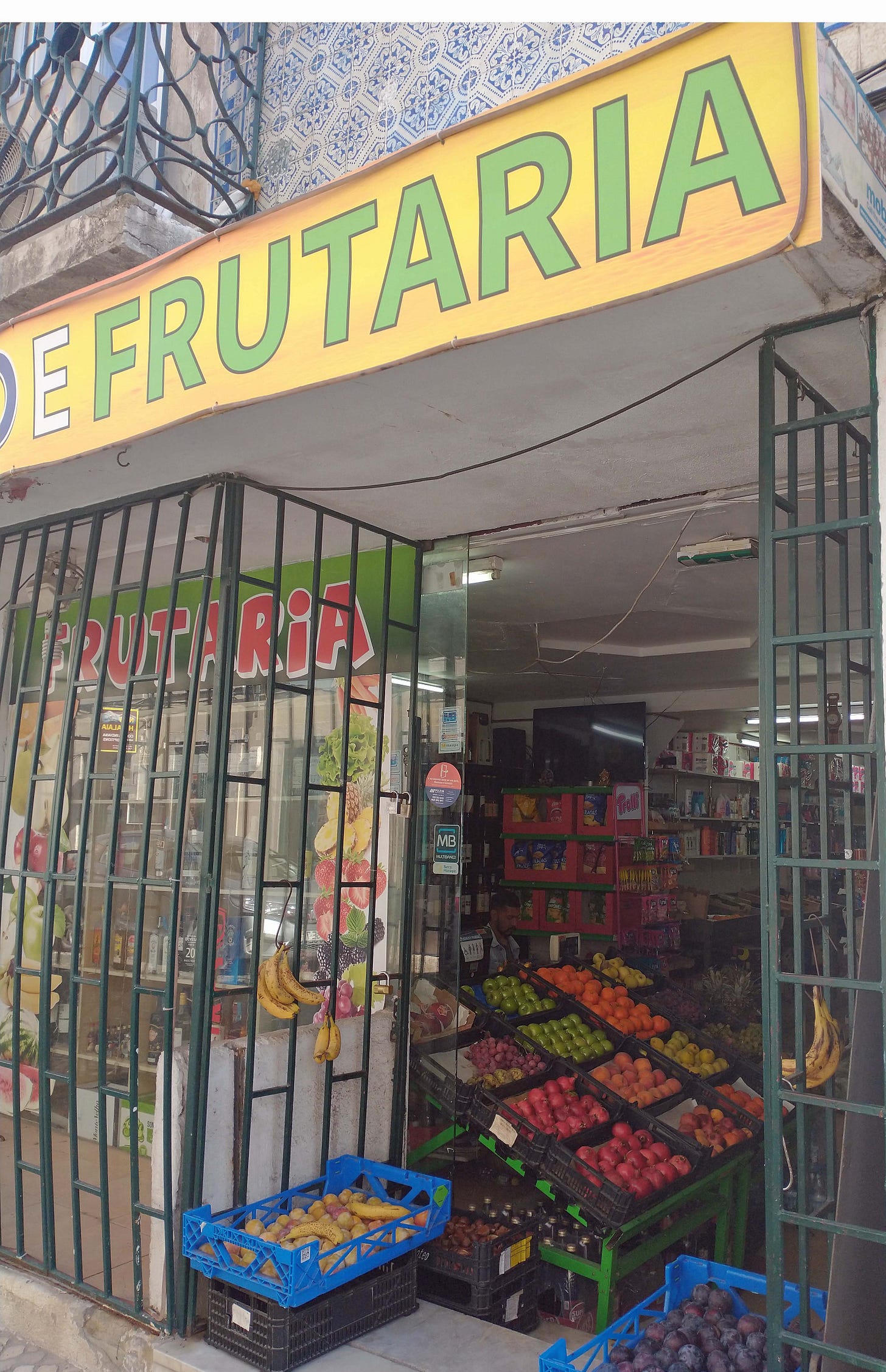Our neighborhood is quite small. At least, what we consider to be our neighborhood. It’s not like we’re living at the end of a cul de sac or a development here. How do you know where a neighborhood ends and begins? This, according to us (including Josie!) is our neighborhood.

It is not a fancy part of the city, by any means. It feels older and less gentrified.1 We thought that sharing some pictures of the doors in this small area would give you an idea of the part of the city that we’ve landed in.
We will start with the door to our building. They kept the exterior walls and gutted the interior. Naturally, they did not rebuild the front door to match the existing,2 and so we have this boringly new treasure.

Ah, but it has an unusual feature that the whole building enjoys: noise! Many appeals to the builder have resulted in this much quieter affair. People in units from the bottom floor to the top report being able to be serenaded by the Slamming Door.
How loud you ask? Worth waiting til the end of this audio clip:
How many such new doors does this neighborhood boast? About 10% would be our guess, although we’ve not seen any with something like this design.
Also, there’s a cute guy who just celebrated his 26th Anniversary in front. He’s not a camera hog, far from it, but he gamely agreed to help show you the size variation of doors in the neighborhood. - this paragraph written by Amy
Those of you who live in New England know that if you have a barn, you paint it one color only: Barn Red.3
Well, there’s a similar thing here with doors. What color do you paint your front door? Why forest green, of course.4

We’re pretty jealous of these folks with the blue door. They have a mail slot! In our case the mail carrier rings our bell. If we answer, we get mail!

The long street at the bottom of the hill that makes up our neighborhood is a lively commercial area. And home to the church whose bell we enjoy.

Also from this street, one of the many frutarias.
Just a sampling of the rest of the many doors we enjoy on our walks.
That’s all for now.
Love from Lisbon,
Amy & Scott
Our Portuguese is not even close to the point where we can start digging into things like the age of the neighborhood, the types of people who lived here. You know, all the fun stuff.
Our so we assume. They are hard to reach and not very interested in stuff like the history of the building.
Why?, you ask. In the 1700s farmers got tired of the elements wearing on their barn. Who wants to keep repairing a barn? So they figured out the cheapest paint they could (farmers are not impressed by fancy). Milk plus lime, and maybe a bit of clay gives you milk paint. Who knew, huh? Turns out, though, that adding a pigment to paint makes it more protective. The cheapest pigment (there’s that farmer cheap again) is iron oxide, so they used that. That gives you the nice, deep red with a bit of brown color. Once pain became easier to get, everyone was so used to barns in barn red, Farmer Dan would walk into his paint store and say, “Ayup, I’m a gonna paint my barn.” And Paint Seller Joe would hand over the barn red.
No, we don’t have great information on WHY green doors. We need more Portuguese language classes to figure that out! A slightly educated guess suggests that aged copper flakes (which would be cheap) mixed with lamp black (which is, as its name suggests, made from soot), and you’ll likely end up with the doors here.









You could generate a wonderful poster/print of the doors of your block!
#14 has chutzpah - not only plants, but a clothesline above the sidewalk, too! Although I can see the point of view that just because one lives directly on the street, one should not have to give up all the advantages that are enjoyed by apartment dwellers with balconies/courtyards.